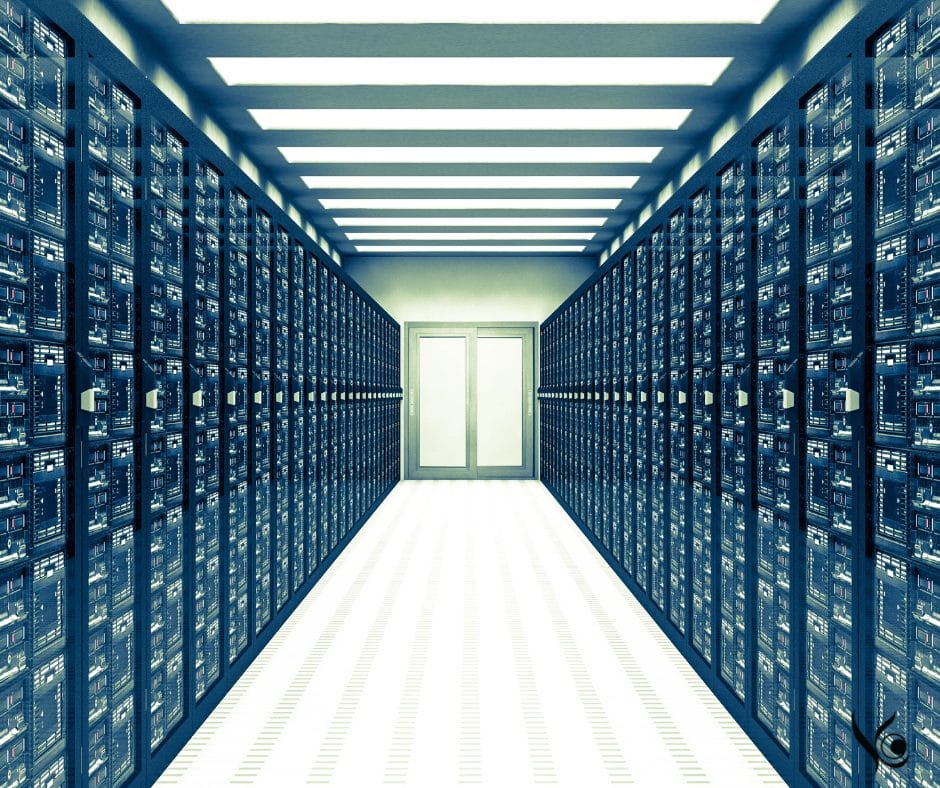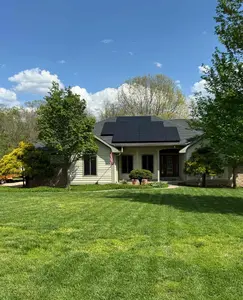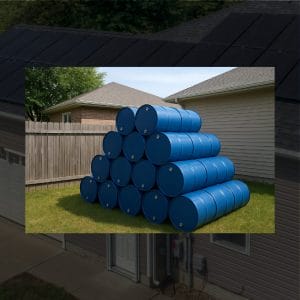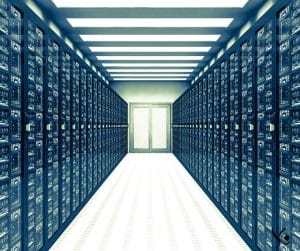This year, we have seen our business grow with increasing numbers of large commercial solar installations—and we are projecting that growth to continue, and accelerate, in 2012. But we have also seen a steady increase in residential solar. And in looking back over the past couple years, we see some clear trends emerging.
The desire to be “clean and green” is a primary driver for home solar. We always advise customers to take steps toward energy efficiency first; then, a natural next step is renewable energy. Most residential customers want to offset a significant portion of their electrical usage with grid-tied solar. They understand that solar does indeed work—very well—in Ohio, and that it is a truly clean and green energy source, creating no emissions while producing electricity from sunlight.
But another factor that sometimes people do not consider is that solar increases the value of their home—significantly. It is viewed as a clear differentiator and “cool factor” by home buyers; it makes your house different from another one down for sale the street. Consider this, from Martin LaMonica of CNETNews (August, 2011):
“It stands to reason that adding an asset which cuts your electricity bills—solar panels—will bump up a home’s value. Now an economic study attaches numbers to solar panels’ real-estate value.
“The National Bureau of Economic Research (NBER) recently released an analysis that found solar panels add between 3 percent and 4 percent to the value of a home. That result is consistent with a study released in April by Lawrence Berkeley National Laboratory which found that solar photovoltaic (PV) panels have a “sizeable effect” on home prices.
“The NBER study looked at prices in San Diegoand Sacramento, Calif., to measure the effect of solar panels. The homes studied have panels that generate electricity (not hot water) and are connected to the grid so households draw from the regular electricity system when panels are not generating.
“Our evidence suggests that similar to other home investments such as a new kitchen, solar installation bundles both investment value and consumption value,” conclude the authors, who are California-based economists. The “investment value” increases the sale price of a home and the “consumption value” is the benefit of having an environmentally-friendly energy source.”
Reviewing our recent residential installations, we find that a 5 kilowatt (kW) system is about average for a residence. The average cost for a nominal 5kW grid-interactive system using standard efficiency modules is approximately $33,000., while the average cost for a nominal 5.4kW grid-interactive system using Premium SunPower modules is about $38,000. Such a system produces about 5,400 kilowatt-hours (kWh) annually, and about 450kWh per month, on average. The average Ohiohome uses between 800-900kWh per month, according to the Public Utilities Commission of Ohio.
Sizing a residential system largely depends on the available roof area (optimally south facing with a 30° tilt or roof pitch). It also depends on the customer’s utility usage and their power offset goals—in other words, how much of their total electrical usage they’d like to cover with solar. Customer offset goals vary, and generally range between 10-100% of their utility usage. The most common trend we see is to offset between 20-50% of annual utility usage with solar. In our experience, most customers are comfortable with an offset in this range. Batterybackup is rarely installed, as it adds a significant cost to the system; if utility outages are infrequent and short term, we rarely suggest batteries.
It is not uncommon for a customer to install a residential solar system in phases—that is, to begin with a modest-sized system, then add modules over time to increase the size and clean power output of their array. Among our larger residential systems, some of which have been expanded over time, Third Sun Solar has installed a number of systems of 10kW and above, including a 23.7kW residential system—which is the largest residential solar array in Ohio.
With larger systems, the main factors are ample roof space and utility usage that is higher than average—where the larger systems provided significant offset. In one of our recent installations, a 13.44kW system mounted on a barn roof now serves both a workshop and the residence, for a 30% annual utility offset. In another case, the original inquiry from the customer stated: “We want to reduce our electric bill and help the environment. Furthermore, I run a business at home that is doing well and is requiring increased electricity demands.” In cases like that, where other conditions are right, we can design and install a larger system to meet a homeowner’s green goals and offset a significant portion of their home and home-based-business energy bills.
Among the incentives available to homeowners are a 30% federal tax credit, which is in effect until 12/31/2016, and the sale of Solar Renewable Energy Credits, or SRECs, coupled with the utility savings. An SREC represents the “renewable energy attributes” associated with one megawatt hour of electricity produced by solar technology (one MWh equals 1,000 kilowatt hours). It also puts value on that clean power, as SRECs can be sold under contracts or the spot market.
How many SRECs will a given solar energy system produce? A general rule of thumb in Ohiois 1 kW of solar capacity will produce approximately 1 SREC per year—therefore an average residential 5kW solar power system will produce about 5 SRECs per year. SRECs are currently trading for about $320 apiece, which could provide about $1,600 per year in extra income for a 5kW system owner.












